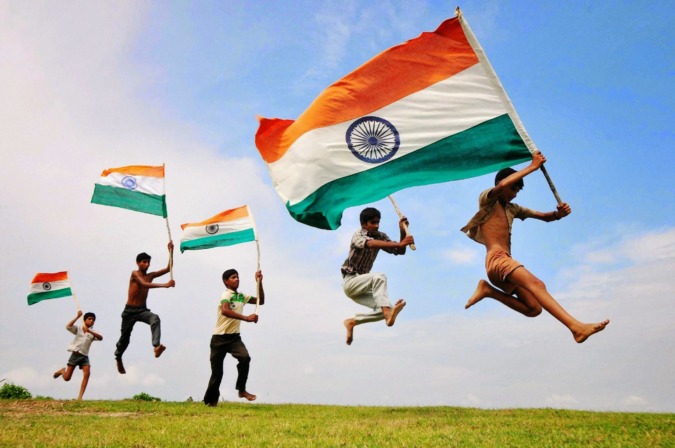
India’s Independence Day celebrated on August 15th, marks a significant milestone in the country’s history, commemorating the day when India broke free from colonial rule.
At the heart of this momentous event lies the Indian national flag – a tricolor emblem that encapsulates the spirit, struggle, and unity of the nation.
The history of the Indian flag is a tale of evolution, resilience, and profound symbolism that mirrors India’s journey toward self-determination.
Birth of the Tricolor
The origins of the Indian flag trace back to the early 20th century when India was under British colonial rule. The need for a distinctive national symbol became apparent as the struggle for independence intensified. In 1921, Mahatma Gandhi proposed the adoption of a national flag during the Indian National Congress session, seeking to unify the diverse population under a common emblem.
The first version of the Indian flag was designed by Pingali Venkayya, an agricultural scientist, and was presented to the Congress in 1921.
This flag featured two horizontal stripes – red and green – representing the two major religious communities, Hindus and Muslims, respectively. A spinning wheel, symbolizing India’s economic progress, adorned the flag’s center.
Evolution of Design
Over the years, the Indian flag underwent several modifications, each reflecting the evolving aspirations and concerns of the nation. In 1931, a significant change was made to the flag’s design during the Karachi session of the Indian National Congress.
The spinning wheel was replaced by the Ashoka Chakra, a 24-spoked wheel, which carried deep historical significance as it appeared on Emperor Ashoka’s Lion Capital. The saffron, white, and green colors remained, representing courage, peace, and growth, respectively.
The flag’s design embodied the ideals of unity in diversity and peaceful coexistence, which were pivotal in the struggle against British rule. The saffron color symbolized sacrifice, white stood for truth and purity, and green signified fertility and progress – together forging a profound narrative of India’s identity.
- How to Switch Car Insurance Companies Without a Hassle
- Spinning a Yarn of Fun: The Pin Up Betting Platform Ultimate Review
- Secrets of Creating Ultimate Man’s Cave
- Experience Pure Audio Bliss with OnePlus This World Music Day
- Kroll’s Celebrity Brand Valuation Report: Virat Kohli Reclaims Top Spot
Flag Hoisting and Independence
As India’s struggle for independence intensified, the tricolor flag emerged as a powerful symbol of resistance. It was proudly hoisted during protests, rallies, and various acts of civil disobedience, serving as an inspiring emblem of hope and unity.
The historic moment arrived on August 15, 1947, when the Indian tricolor was hoisted for the first time as an independent nation, marking the end of British colonial rule.
Post-Independence Developments
With India’s newfound independence, the national flag retained its significance as a symbol of sovereignty and national pride. The Flag Code of India was enacted in 1950, providing guidelines for the proper display and use of the flag. The Ashoka Chakra underwent a slight alteration in 2002, with its 24 spokes being equally divided into four quadrants to represent the ideals of righteousness, progress, peace, and valor.
Our Take
The Indian flag stands as an enduring testament to the struggles, sacrifices, and resilience of the Indian people in their quest for independence. Its evolution from a simple design to a deeply symbolic emblem reflects the nation’s journey toward self-determination and unity.
As India celebrates its Independence Day, the tricolor flag continues to evoke a sense of patriotism, reminding the nation of its rich history and bright future ahead.





